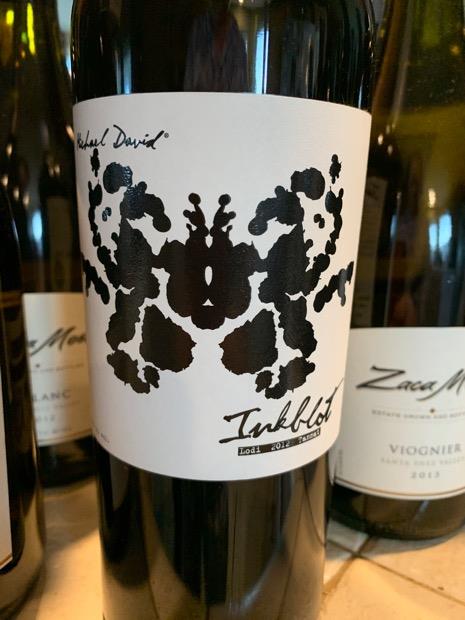
External search
Google (images)
Wine Advocate
Wine Spectator
Burghound
Wine-Searcher
Vintages
2021
2014
2013
2012
2011
2010
2009
2008
From this producer
Show all wines
All tasting notes
|
| Drinking Windows and Values |
| Drinking window: Drink between 2015 and 2019 (based on 11 user opinions) |
| Community Tasting History |
| Community Tasting Notes (average 89.6 pts. and median of 91 pts. in 6 notes) - hiding notes with no text | | | Tasted by dalemosier on 9/12/2018 & rated 91 points: Big red, has smoothed out nicely, drinks well now. (429 views) | | | Tasted by rsed on 12/10/2016 & rated 93 points: oh yes I like this style, dark, brooding, fruity, heavy, needs food, strong cheese, want more (737 views) | | | Tasted by bradfriedlander on 6/28/2016 & rated 92 points: Excellent! Deep dark fruit. Plenty of structure. Full mouth feel. Long finish. A lot of flavor without being overly fruity. (716 views) | | | Tasted by bkskimachine on 9/19/2015: X (813 views) | | | Tasted by sortiarius on 5/13/2015 & rated 86 points: Lots of oak, lots of tannins. Very full bodied. A bit too much of everything, especially the oak. Does not fall to my flavor. (893 views) |
| Michael-David Vineyards Producer website
Tannat Varietal character (Appellation America) | Wikipedia
A southern French variety, it's most commonly found in the southwest part of the country near the Pyrenees. Characteristically, it has hard tannins, raspberry aromas, and a fair amount of astringency. Given those tannins, it's successful as the base for French roses, where tannins are minimized by little skin contact. In blends, particularly in California, Tannat adds bite to what might otherwise be flabby or soft wines resulting from overripe grapes.
Wine from the Tannat grape is typically rough and tannic when young, but with aging will mature into a full-bodied red wine. Modern winemaking in France (Madiran appellation) has begun to emphasize the fruit more and utilize barrel aging to help soften the tannins, with the wines typically spending about twenty months in oak prior to bottling.
The Tannat vine was introduced in Uruguay by Basque settlers in the 1870’s and began to flourish as it readily adapted to the local soil and climate. Today it is often blended with Pinot Noir and Merlot, and is made in a variety of styles including those reminiscent of Port and Beaujolais. Although considered Uruguay’s national grape, Tannat is also grown in Argentina, Australia, Brazil and in Italy's Puglia region where it is used as a blending grape.
Tannat wines produced in Uruguay are usually lighter in body and lower in tannins than those from France. In France, efforts to solve the harsh tannic nature of this grape led to the development of the winemaking technique known as micro-oxygenation. Vineyards in Uruguay have begun to distinguish between the "old vines" that are descendants from the original European cuttings and the new clones introduced in the 1990’s. The newer vines tend to produce more powerful wines with higher alcohol levels but less acidity and complex fruit characteristics, although some wineries utilize both vines to make blends.
First brought to the US late in the 19th century by a UC Berkeley agricultural professor, Tannat plantings did not receive much attention until the 1990’s when California producers, most notably in the Santa Cruz Mountains and Paso Robles viticultural areas, began using it in blends with Cabernet Franc, Sangiovese and Syrah. In 2002, the Bureau of Alcohol, Tobacco and Firearms formally recognized Tannat as a separate varietal.
In the vineyard, Tannat is one of the easiest varietals to grow, ripening late and being frost hardy. Unlike other varietals, it is not prone to overproduction and so does not require thinning. The grape’s berries have thick skins, which make it resistant to powdery mildew and botrytis, and which contributes to the varietals naturally high tannins. One notable difficulty with growing Tannat is its thick stems, which cling tightly to the berries and can be difficult to remove at harvest.
Tannat has significantly higher polyphenol content than other red grapes, making it the most bioactive variety with regards to oxidative reactions in food. Doctors have recommended Tannat as being the best wine grape for cardiopulmonary health because it contains a large amount of the antioxidant procyanidin, a chemical which helps bolster blood vessels and increase oxygen flow to red blood cells, ultimately helping to avert cardiovascular disease.
Tannat makes decidedly robust wines, with pronounced aromas of tobacco smoke, plum or ripe berries. The wines also tend to be dense purple-red in color, with significant tannins and a wonderfully spicy finish. Notable California producers include Bonny Doon Vineyards in the Santa Cruz Mountains and Tablas Creek Vineyards in Paso Robles.USAAmerican wine has been produced since the 1500s, with the first widespread production beginning in New Mexico in 1628. Today, wine production is undertaken in all fifty states, with California producing 84% of all U.S. wine. The continent of North America is home to several native species of grape, including Vitis labrusca, Vitis riparia, Vitis rotundifolia, and Vitis vulpina, but the wine-making industry is based almost entirely on the cultivation of the European Vitis vinifera, which was introduced by European settlers. With more than 1,100,000 acres (4,500 km2) under vine, the United States is the fourth-largest wine producing country in the world, after Italy, Spain, and France.California2021 vintage: "Unlike almost all other areas of the state, the Russian River Valley had higher than normal crops in 2021, which has made for a wine of greater generosity and fruit forwardness than some of its stablemates." - Morgan Twain-Peterson Central Valley The Central California Winegrowers (Official site) | Central Valley (California Wine Institute)Lodi Lodi Woodbridge Winegrape Commission | Lodi District Grape Growers Association |
|




